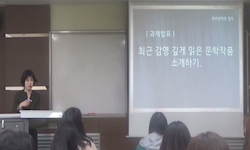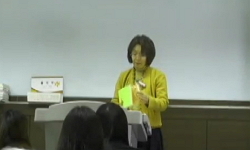This study examined the aspects of traditional Chinese ideologies being reproduced in picture books. The reason is that the most remarkable growth area in China, the world’s largest children’s book market, is picture books, and among them, traditi...
http://chineseinput.net/에서 pinyin(병음)방식으로 중국어를 변환할 수 있습니다.
변환된 중국어를 복사하여 사용하시면 됩니다.
- 中文 을 입력하시려면 zhongwen을 입력하시고 space를누르시면됩니다.
- 北京 을 입력하시려면 beijing을 입력하시고 space를 누르시면 됩니다.
https://www.riss.kr/link?id=A108596242
- 저자
- 발행기관
- 학술지명
- 권호사항
-
발행연도
2021
-
작성언어
Chinese
-
주제어
Traditional Chinese Culture ; Traditional Ideology ; Picture Book ; Chinese Children’s Cultural Contents ; 24solar terms ; 중국 전통문화 ; 전통 이데올로기 ; 그림책 ; 중국 아동문화콘텐츠 ; 24절기 ; 中???文化 ; ??意?形? ; ??? ; 中??童文化?品 ; 二十四??
-
KDC
820
-
자료형태
학술저널
-
수록면
75-117(43쪽)
- 제공처
-
0
상세조회 -
0
다운로드
부가정보
다국어 초록 (Multilingual Abstract)
This study examined the aspects of traditional Chinese ideologies being reproduced in picture books. The reason is that the most remarkable growth area in China, the world’s largest children’s book market, is picture books, and among them, traditional culture picture books are in the spotlight as a practice of glocalism, and are being transformed into various cultural contents.
The research results are as follows. First, this study examined the nature of the text narrator, the relationship between the text and the picture, and the reproducibility of tradition through paratext. The narrators of the traditional Chinese culture picture books are mostly third-person adult narrators holding to an enlightening attitude. The pictorial narrators wanted to show tradition by borrowing traditional art forms. Paratexts use various traditional art forms very well. However, in the picture books, there are discipline for obedience or vertical hierarchy in favor of delivering proven knowledge.
Second, the nowness of tradition was examined through the questions of whose desire the tradition represents and why the tradition is needed now. The picture books emphasize traditional ethics and the trend, defend patriarchal order, and make the Han Chineses’ agrarian culture Chinese identity. There is also an attempt to preempt the 24 seasonal divisions in the cultural heritage competition.
Third, the consumption of tradition was examined through expected readers and cultural content transformations. There are various forms of cultural transformation: sand painting show, three-dimensional book, audio book, kindergarten mini class, elementary school curriculum, museum cultural lectures, hands-on activities, and holiday gift sets consisting of game, making kits and picture books.
Chinese traditional ideologies in picture books are shown in the aspects of the enlightenment in the viewpoint of adults, cultural marketing for urbanites and top-down Chinese cultural policies, and are consumed in the various forms of interesting children’s cultural content.
목차 (Table of Contents)
- 1. 绪论
- 2. 儿童文学意识形态研究的意义及方法论
- 3. 图画书中再现的传统文化意识形态
- 4. 结论
- 參考文獻
- 1. 绪论
- 2. 儿童文学意识形态研究的意义及方法论
- 3. 图画书中再现的传统文化意识形态
- 4. 结论
- 參考文獻
- Abstract
동일학술지(권/호) 다른 논문
-
Can Parasite succeed indeed in China?
- 한국중어중문학회
- Kim Jung Eun(金?恩)
- 2021
-
- 한국중어중문학회
- ??万(Min, Kyungman)
- 2021
-
- 한국중어중문학회
- 文英喜(Moon, Younghee)
- 2021
-
- 한국중어중문학회
- 柳秀旼(Yoo Su Min)
- 2021




 DBpia
DBpia





